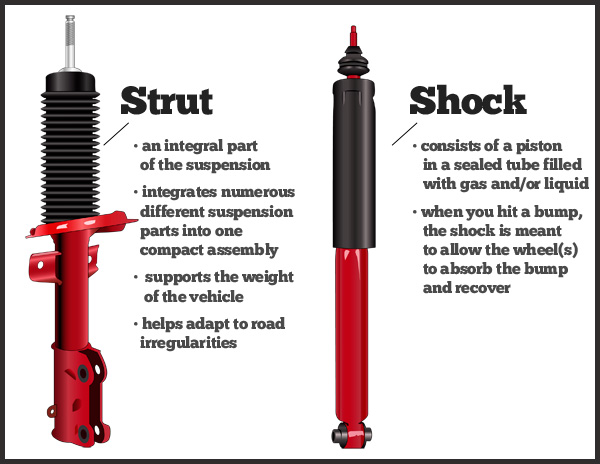Are you feeling every bump and pothole on the road a little too vividly? It might be time to give your vehicle’s shocks and struts some serious attention.
These crucial components of your car’s suspension system play a vital role in ensuring a smooth and safe ride. Ignoring their wear and tear can lead to uncomfortable drives and potential safety hazards. So, how do you know when it’s time to replace them?
We’ll guide you through the telltale signs and help you understand the importance of timely replacements. Stick around to learn how often you should be checking on these unsung heroes of your car’s performance, and ensure your travels are always smooth and secure.

Credit: www.tlmotors.com
How Often To Replace Shocks And Struts
Shocks and struts should generally be replaced every 50,000 to 100,000 miles. Signs like excessive bouncing or uneven tire wear indicate it’s time for new ones. Regular maintenance checks help ensure a smooth and safe ride.
Driving safely depends on many factors, and your vehicle’s shocks and struts are crucial. They help maintain control, comfort, and stability. Knowing when to replace them can save you from potential issues. Let’s explore how often you should consider this important maintenance step.
Recognizing Signs of Wear Understanding wear signs helps in deciding replacement time. – Bumpy Ride: If the ride feels rough, it’s time to check. – Vehicle Nose Dives: The front dips when braking hard. – Unusual Tire Wear: Uneven patterns may suggest suspension problems.
– Leaking Fluid: Visible oil or fluid on shocks is a warning. Recommended Mileage Intervals Manufacturers provide guidelines on mileage for replacement. Typically, shocks and struts should be replaced every 50,000 to 100,000 miles. This range depends on driving conditions and habits.
Rough roads and off-road driving may demand earlier replacement. Regular checks during maintenance can help spot issues early. Impact of Driving Habits Driving style can greatly affect shock and strut lifespan. – Aggressive Driving: Frequent hard braking and sharp turns increase wear.
– Off-Road Adventures: Rough terrains can shorten shock life. – Heavy Loads: Hauling heavy items puts extra stress on suspension. Importance of Regular Inspections Routine inspections help catch issues before they escalate. Mechanics can assess the condition during regular service checks.
They look for leaks, damage, and overall function. Early detection prevents costly repairs and ensures safety. So, include suspension checks in your vehicle’s routine maintenance.

Credit: stevesautorepairva.com
Conclusion
Shocks and struts need regular checks. They wear out over time. Listen for unusual noises. Feel for bumpy rides. Notice longer stopping distances. These signs mean it’s time to replace them. Regular checks can save money. They keep rides smooth and safe.
Consult a mechanic for advice. Proper maintenance extends vehicle life. Drive with confidence and comfort. A smooth ride is worth it. Keep your vehicle in top condition. Enjoy safe and pleasant journeys. Remember, safety is key. Replace shocks and struts when needed.
